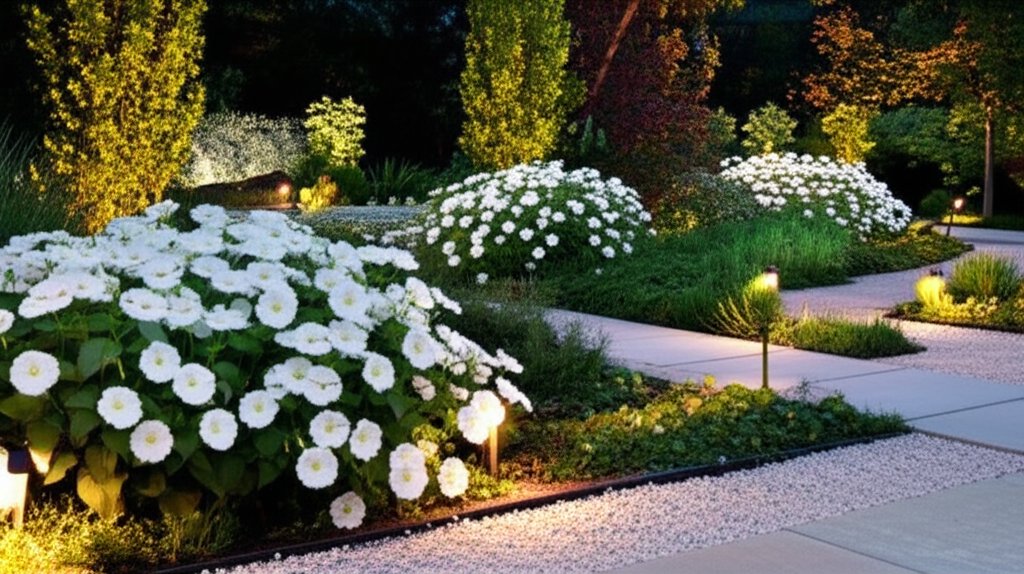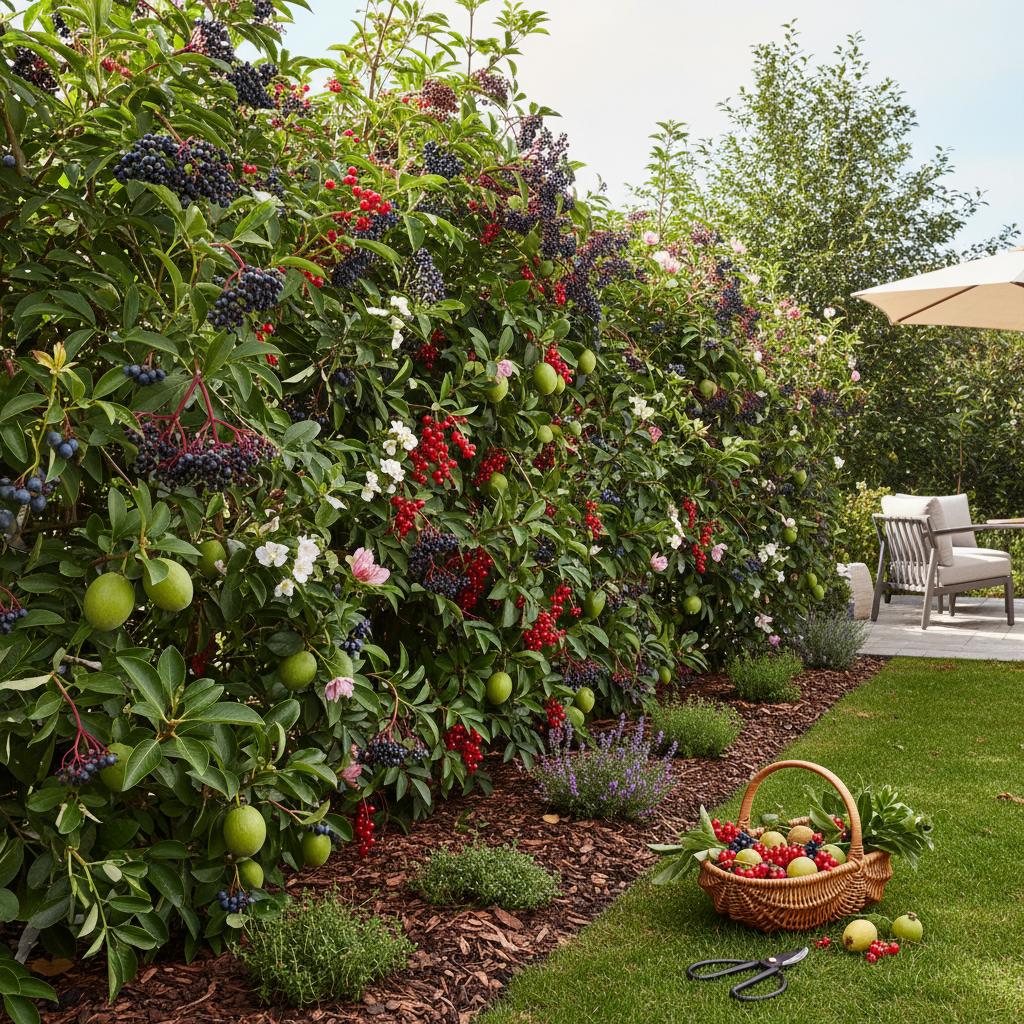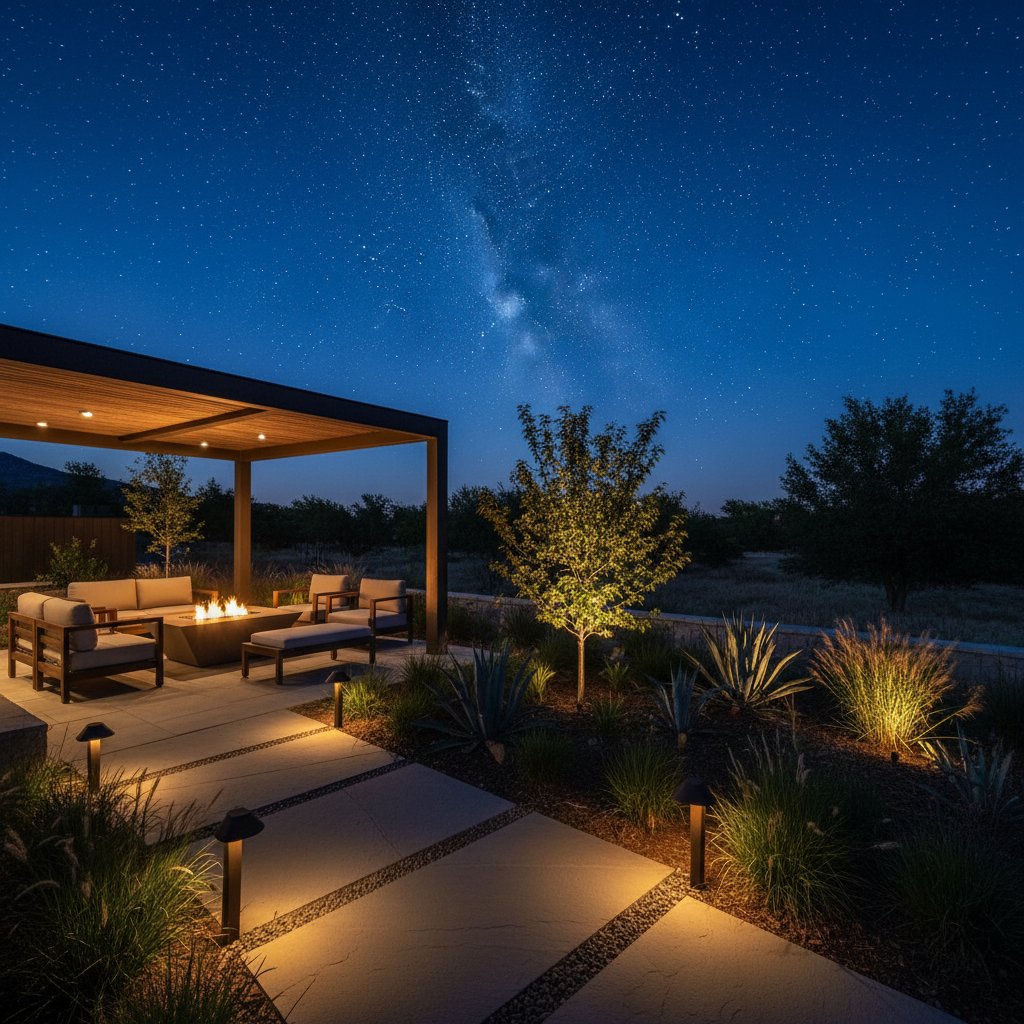Crafting Moonlight Gardens: Elements for Nighttime Appeal
Gardens extend their allure beyond daylight hours through careful selection of plants, lights, and layouts. These spaces evolve into serene havens that illuminate under the stars, emphasizing muted tones, aromatic flowers, and diffused glows to enhance outdoor experiences after dusk.
Moonlight gardens draw focus to nocturnal visuals and sensations. Designers prioritize subtle palettes, light-reflecting elements, and evening fragrances to foster a soothing environment that encourages lingering in the yard as night falls.
Defining Characteristics of Moonlight Gardens
Moonlight gardens differ by emphasizing nighttime visibility and ambiance over daytime vibrancy. Pale shades and glossy leaves capture moonlight or soft artificial sources, while evening-opening blooms release scents that intensify in cooler air.
Essential components include:
- Light-toned flora that radiates in low light.
- Evening-scented flowers that perfume the air post-sunset.
- Gentle, diffused illumination along trails and highlights.
- Light-reflective surfaces such as pale gravel, smooth stones, or metallic features.
Such gardens suit compact yards, expanding perceived space through strategic glows and scents.
Selecting Plants for Evening Glow and Scent
Plant choices form the foundation of a moonlight garden, targeting species that thrive or transform at night. Opt for blooms that unfurl after dark or foliage that shimmers under minimal light to build depth and interest.
Recommended options encompass:
- Moonflower, with expansive white petals that bloom at twilight and emit a sweet fragrance to draw pollinators.
- Evening primrose, offering vivid yellow flowers that open in the evening and persist through mild nights.
- Angel's trumpet, featuring pendulous blooms in cream or white that dangle from upright stems and release a potent evening perfume.
- Lamb's ear, providing fuzzy silver leaves that reflect light and contribute soft texture year-round.
- White hydrangea, displaying full heads of blossoms that gleam softly and pair well with climbers.
Combine these with ornamental grasses or gray-green shrubs for varied layers. Arrange taller specimens at the rear and shorter ones forward to ensure balanced views from multiple perspectives; test placements during dusk to confirm glow effects.
Integrating Naturalistic Lighting Solutions
Effective lighting unifies the moonlight garden without overpowering its subtlety. Aim for illumination that mimics lunar softness, enhancing plant forms and paths while preserving mystery.
Suitable lighting varieties consist of:
- Path markers, such as low-voltage LEDs embedded in ground along routes to ensure safe navigation.
- Overhead strings, draped across branches or pergolas to cast even, twinkling light over seating zones.
- Uplights, positioned to accentuate tree trunks or wall textures, revealing contours in shadow.
- Solar-powered lanterns, which charge by day and offer portable glow for flexible arrangements.
Select bulbs in warm white hues around 2700K to echo moonlight's tone. Install dimmer switches for mood adjustments, and position fixtures to avoid glare by shielding direct views.
Incorporating Hardscape for Structure and Reflection
Hardscape features provide framework and amplify light play in moonlight gardens. Opt for materials in neutral tones that bounce illumination, such as limestone pavers or white pebble borders, to delineate areas without visual clutter.
Incorporate elements like:
- Curved gravel walkways that crunch softly underfoot and reflect ambient light.
- Compact water installations, including bubbling fountains or still pools, to capture and scatter glow while introducing gentle audio.
- Benches or Adirondack chairs clustered near entry points for convenient access, upholstered in weather-resistant fabrics.
Encircle seating with vining jasmine or stocky lavender to infuse calming aromas. Sketch layouts on paper first, scaling paths at least three feet wide for comfortable passage, and ensure hardscape integrates seamlessly with soil beds.
Budgeting and Upkeeping Your Moonlight Garden
Moonlight gardens accommodate various financial plans. Basic enhancements, like adding solar lights and select perennials, typically range from two hundred to five hundred dollars, whereas comprehensive overhauls with patios and wiring may exceed three thousand.
Upkeep mirrors standard landscaping routines. Prune blooms to encourage reblooming, refresh light sources annually, and clear debris from reflective paths. Position solar units in full-sun exposures for optimal performance, and apply mulch to retain soil moisture during dry spells.
Maximizing Nighttime Enjoyment in Your Garden
A finished moonlight garden serves as a versatile retreat for solitary reflection, intimate dinners, or stargazing sessions. Its evolving scents and lights adapt to seasons, with summer blooms yielding to autumn foliage glows.
Personalize over time by repositioning lights for new effects or introducing seasonal accents like white pumpkins. This dynamic space aligns with daily rhythms, delivering consistent enchantment that deepens appreciation for outdoor living after sunset.



